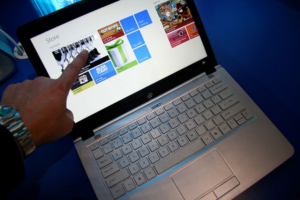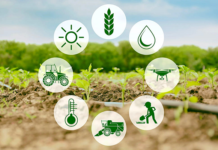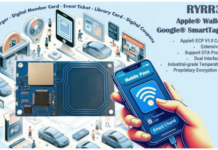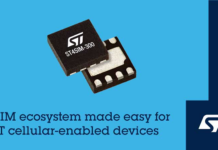
Retail is a tough industry to survive in. The competition is rough, margins are low and customers are demanding. Therefore, retailers have reinvented their game time and again and technology has come to their aid at numerous stages. Sometimes in the form of Data Analytics to understand customer behavior, at times as an AI powered Chatbot to enhance customer brand engagement and now it is Internet of Things (IoT) playing its part in transforming retail.
Internet of Things with the strong and intrinsic flavor of retail has imbibed its own life and breath and I fondly term it as the ‘Retail of Things’.
IoT has been a buzz word of 2016 and has further spread its expanse in 2017. Per a survey by markets and markets, the global IoT in the retail market is expected to grow from USD 14,280.0 Million in 2015 to USD 35,640.0 Million by 2020, at a Compound Annual Growth Rate (CAGR) of 20.0%. Industry researchers, experts and technologists have devoted resources-monetary and human, to divulge deeper into the opportunities IoT presents to the Industry. Another study by Retail Systems Research (RSR), 72 percent of retailers surveyed stated that they have invested in IoT- related projects already. In short, Retail of things is not just a buzz word but is a reality and retailers need a multifold approach to leverage the opportunities that it brings in the strategic and operational arenas of retail industry.
RoT: Living Up to the Expectations
With changing trends, intensified competition and fastidious consumers, RoT can play a pivotal role for retailers to add new channels, drive customer satisfaction and increase business revenues. Companies need to consciously reinvent their strategies and implement technologies to enrich the customer experience.
Target implemented beacon technology alerts customers of personalized offers and in-store discounts enables customers to access product information with the help of the Target app and Bluetooth. As an example, we can see Rebecca Minkoff stores which intends to offer their customers a more personalized experience. To achieve the stated goal, they installed smart mirrors and RFID tags that help a customer to try on clothing virtually and also offer suggestions of various looks.
Ralph Lauren went a step ahead by embedding IoT features in its products and recently launched a t-shirt range that monitors vital stats, heart beat rate and calories. Customers can now sync this data with their phone health app.
Adding another dimension to the RoT impact, Amazon Echo and Samsung Smarter Things, made connected homes a reality with the deployment of digital assistants that enables the customer to control lighting, burglar alarms systems and thermostats. Amazon’s Echo and Google Home also serve as virtual assistants and search devices by helping consumers with anything from ordering pizza to getting a rental movie.
The Building Blocks of RoT
RoT (Retail of Things) is an amalgamation of technology both hardware and software and it requires tailored implementation in the defined framework of retail as an industry. Indisputably, the most crucial facet of RoT (Retail of Things) is the technology which includes the devices and components that enable brands to amplify connectivity with customers and utilize data generated to optimize business objectives and shrink costs. Per a research report by Juniper Research, retailers intending to invest in IoT technologies will spend an estimated $2.5 billion in hardware and installation costs by 2020; a fourfold increase from 2015. This investment is estimated to be in the key areas of:
- Omnichannel Retail Experience: The integration of physical and online stores is a significant objective for any retailer, making omnichannel service becoming a pre-requisite rather than a mere feature. RoT enables omnichannel by implementing the RFID enabled products and electronic product codes that track the location of the product in the chain. Amazon’s Dash button is a Wi-Fi enabled device that takes care of replenishing out of stock products by automatically placing an order on behalf of the consumer.
- Agile and Automated Supply Chain: With the introduction of Radio Frequency Identification Devices (RFID), beacon technology and sensors, companies are able to track and monitor their products at every stage. According to the RFID Lab at Auburn University, the use of item-level RFID raises the accuracy of inventory management from 63 percent to 95 to 99 percent. The deployment of RoT enables accurate inventory management, quality control and reduction in product loss. The ability to track real-time inventory movement also enables retailers to do a better allocation of resources in logistics, raw material acquisition and other areas, thereby helping in costs optimization.
- Process Automation: Automating manual processes not only optimize cost but also increases efficiency. Per a Cisco report, nearly 48 percent of processes in the retail world can be automated. Manual processes like, product information through barcode scanning, app integration, mobile payments, automated checkouts and beacon technology can be easily automated. Going further, the number of retailers implementing these features will only increase.
- Consumer Data and Analytics Infrastructure: With the deployment of IoT technology and sensors, the connected devices are being transformed into smart devices and are generating massive and meaningful data. Retailers and companies are therefore investing in data visualization and analytics infrastructure to make sense of the quantum of data generated by these devices.
Opportunities Versus Challenges – What you need to look out for?
RoT is a significant technology that can transform the way retailers operate currently. Although the biggest challenge is that it needs to be accepted and adopted by consumers as effectively as the retailers.
We have already established the benefit and opportunities that tag along with RoT, but a string of benefits is also followed by key challenges. The crucial challenge retailers need to combat is to manage and use the data effectively, while ensuring compliance and data privacy. Although the smart and connected devices can perfectly capture and transmit data, retailers will still need to analyze and transform data into meaningful insights.
Underlying the above issues is the need for robust networks and servers that can handle the data traffic in real-time. Having said that, another critical challenge will be for organizations to eliminate siloed working and engage departments to work collaboratively to optimize results.
RoT can make shopping experiences simpler and better and with that in mind, what is required is a due diligence in place and an open mind to adopt this technology and leverage it to its maximum.
By: Dr. Sethuraman Janardhanan
Source: pointofsale.com


















